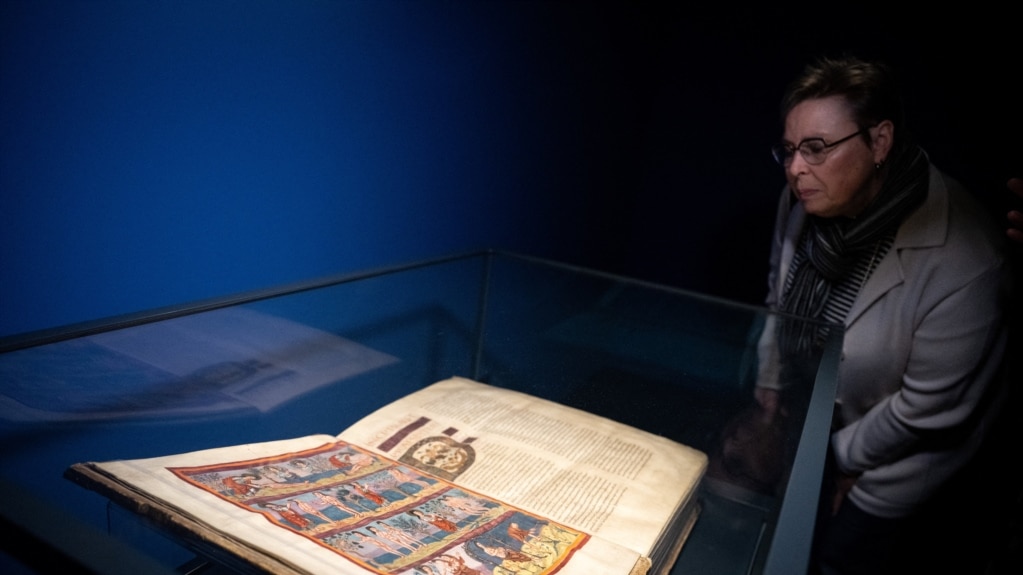A priceless Bible with a mysterious history is being shown in Switzerland near its longtime home at a Christian religious center.
The Moutier-Grandval Bible is considered one of the finest ancient books because of its good condition and the artistry of its creation.
The hand-written book, or manuscript, weighs 22 kilograms. Religious workers called monks produced the book in Tours, France around 1,200 years ago. No one knows how, but it went to Moutier-Grandval Abbey in northwestern Switzerland in the mountainous Jura area.
The British Library keeps the ancient book now. But it has loaned the Bible for three months to the Jura Museum of Art and History in Delemont.
It is only the second time the manuscript has been loaned from London, after being shown at the Jura Museum in 1981 when 32,000 people came to see it.
The museum's director Nathalie Fleury said, "We could even call it a miracle: this…masterpiece has survived the ages, the circumstances of history; it has escaped…wars, fires, revolutions, and has reached us in remarkable condition.”
Around 100 Bibles were produced during the same period in Tours. Eighteen have survived, including three that have special drawings known as illustrations. The Moutier-Grandval Bible is the best-known.
The Bible is going on show in the museum's basement, behind a thick steel door. Sealed inside a glass cabinet, it is the only object in the room.
The manuscript is open on the first page, showing an illustration of the story of Adam and Eve from the Book of Genesis. The colors are still very bright.
The book needs special conditions. As a result, only five people at a time are permitted in the room, for five minutes only.
Claire Breay of the British Library described the Moutier-Grandval Bible as "one of the greatest treasures of the British Library." Breay added that the ancient hand-written Bible "is still bringing people together and bringing, joy, awe and wonder to everyone who sees it."
The book’s 900 pages measure 50 by 38 centimeters. The words are written in two columns of 50 to 52 lines each. The skins of more than 200 sheep were used to make the special writing surface known as parchment.
The book contains four full-page images. Around 20 monks wrote the book in the Latin language in a writing known as Carolingian minuscule script.
Research continues on the parchment and the colors used in the Bible’s images.
Book historian and co-curator Angeline Rais said, "It's very emotional to see it in real life: it's completely different from seeing a reproduction of it in a book or online.”
She told the French News Agency (AFP), "People can see how big it is, how beautiful the colors and the gold still are.”
"There's a lot of mystery around the Bible," said Rais.
How it came to Moutier-Grandval remains unclear.
Some people say the Bible was left behind and forgotten about until it was found in Delemont in the late 1810s or early 1820s. It was sold to an art dealer in 1822.
The British Museum bought the Bible in 1836 for what is equal to $93,600 in today's money.
The Bible even today remains surrounded in mystery. How it was transported from London to Delemont, and all matters of security, remain a guarded secret.
The museum in Jura is showing the Bible until June 8. Experts there hope that the Bible will be shown there again.
I’m John Russell.

